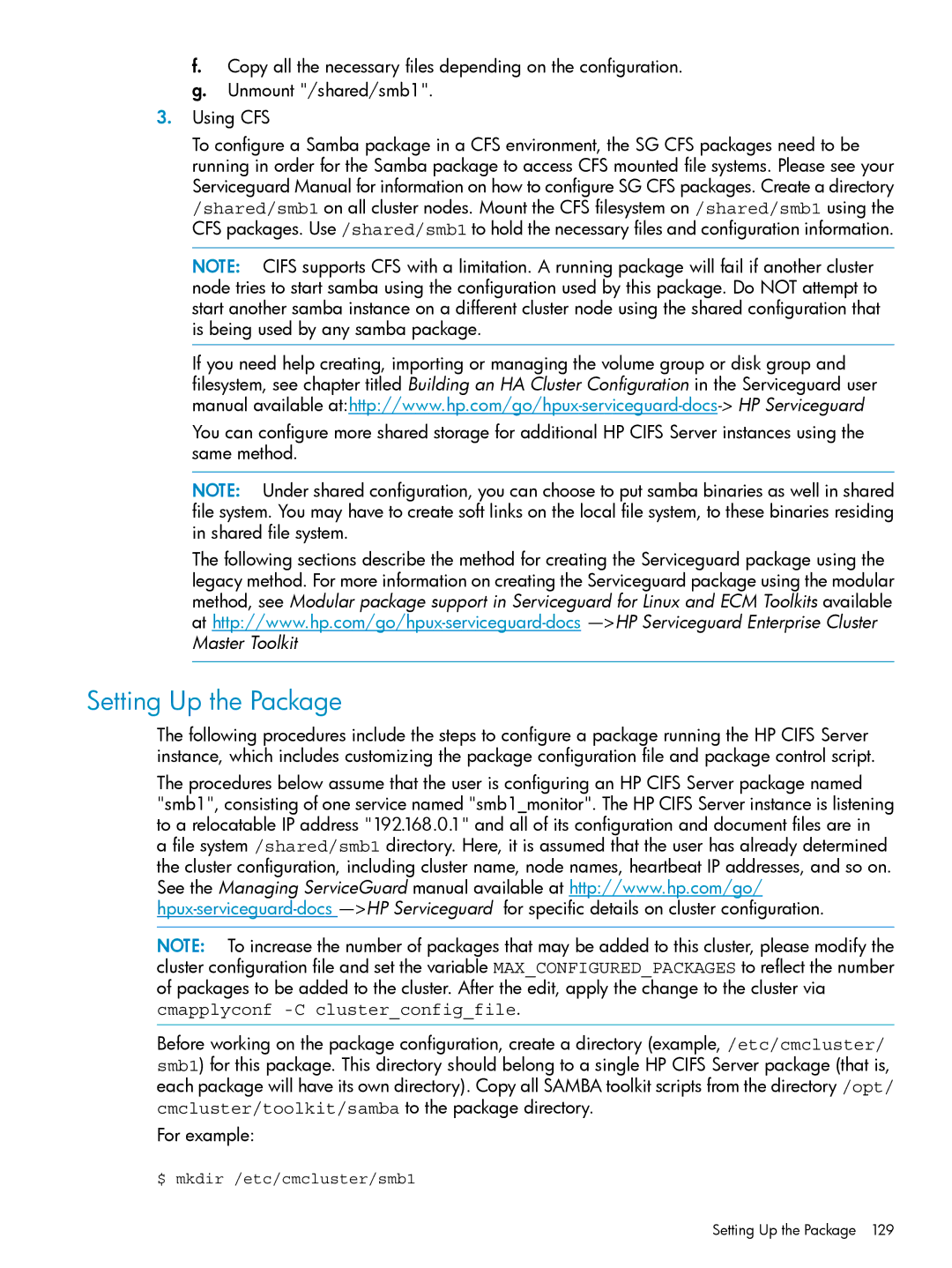
f.Copy all the necessary files depending on the configuration.
g.Unmount "/shared/smb1".
3.Using CFS
To configure a Samba package in a CFS environment, the SG CFS packages need to be running in order for the Samba package to access CFS mounted file systems. Please see your Serviceguard Manual for information on how to configure SG CFS packages. Create a directory /shared/smb1 on all cluster nodes. Mount the CFS filesystem on /shared/smb1 using the CFS packages. Use /shared/smb1 to hold the necessary files and configuration information.
NOTE: CIFS supports CFS with a limitation. A running package will fail if another cluster node tries to start samba using the configuration used by this package. Do NOT attempt to start another samba instance on a different cluster node using the shared configuration that is being used by any samba package.
If you need help creating, importing or managing the volume group or disk group and filesystem, see chapter titled Building an HA Cluster Configuration in the Serviceguard user manual available
You can configure more shared storage for additional HP CIFS Server instances using the same method.
NOTE: Under shared configuration, you can choose to put samba binaries as well in shared file system. You may have to create soft links on the local file system, to these binaries residing in shared file system.
The following sections describe the method for creating the Serviceguard package using the legacy method. For more information on creating the Serviceguard package using the modular method, see Modular package support in Serviceguard for Linux and ECM Toolkits available at
Setting Up the Package
The following procedures include the steps to configure a package running the HP CIFS Server instance, which includes customizing the package configuration file and package control script.
The procedures below assume that the user is configuring an HP CIFS Server package named "smb1", consisting of one service named "smb1_monitor". The HP CIFS Server instance is listening to a relocatable IP address "192.168.0.1" and all of its configuration and document files are in a file system /shared/smb1 directory. Here, it is assumed that the user has already determined the cluster configuration, including cluster name, node names, heartbeat IP addresses, and so on. See the Managing ServiceGuard manual available at http://www.hp.com/go/
NOTE: To increase the number of packages that may be added to this cluster, please modify the cluster configuration file and set the variable MAX_CONFIGURED_PACKAGES to reflect the number of packages to be added to the cluster. After the edit, apply the change to the cluster via cmapplyconf
Before working on the package configuration, create a directory (example, /etc/cmcluster/ smb1) for this package. This directory should belong to a single HP CIFS Server package (that is, each package will have its own directory). Copy all SAMBA toolkit scripts from the directory /opt/ cmcluster/toolkit/samba to the package directory.
